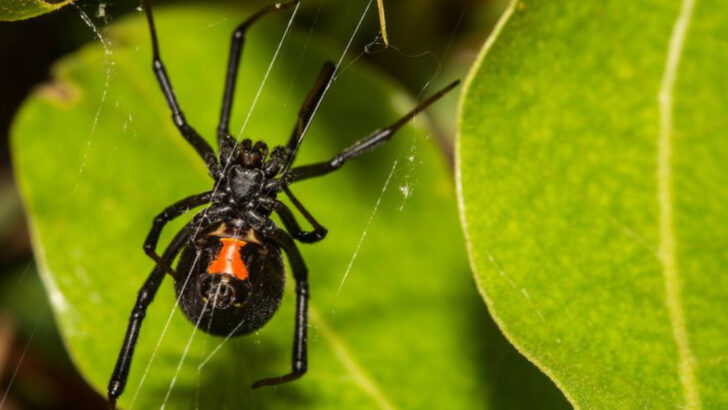Some of the most terrifying creatures in America aren’t the ones with fangs, claws, or a menacing roar. They’re the ones that fit in the palm of your hand—silent, sneaky, and sometimes deadly.
From venomous stingers to disease-spreading bites, these tiny terrors can turn a peaceful day outdoors into a nightmare. Some lurk in your backyard, others hitch a ride on your clothes, and a few even make their way into your home.
You might think you know which insects to avoid, but some of the most dangerous ones are also the most unexpected. A single bite or sting can cause anything from mild irritation to life-threatening reactions.
So before your next hike, camping trip, or even a casual stroll outside, take a moment to learn which insects deserve your attention. It might just save you from a painful—and possibly dangerous—encounter.
Black Widow Spider
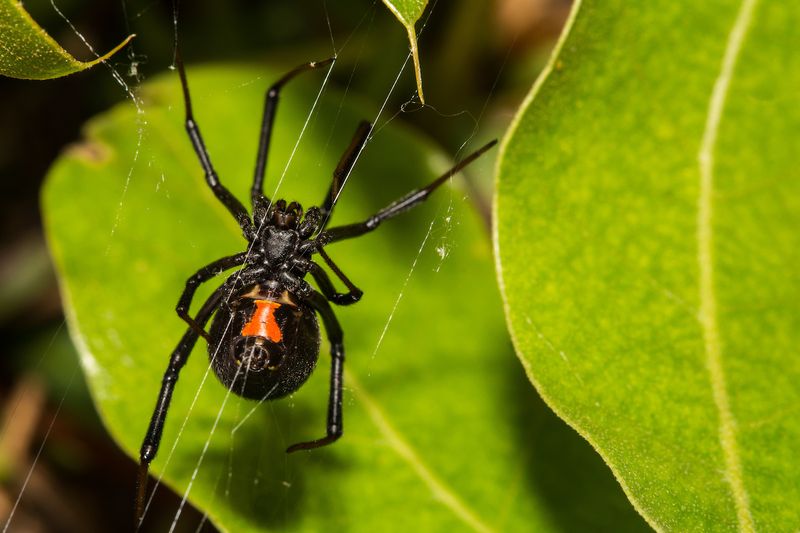
The Black Widow Spider is infamous for its potent venom and distinctive appearance. With a glossy black body and a red hourglass marking, it’s one of the most recognizable spiders in America. These spiders prefer hidden, undisturbed areas like garages or woodpiles. While their bite is rarely fatal, it can cause severe pain and muscle cramps.
Seeking medical attention is crucial if bitten. The Black Widow is particularly dangerous to the young and elderly. Despite their fearsome reputation, they are not aggressive and usually only bite when threatened.
Caution and awareness can prevent unwanted encounters.
Bumblebee
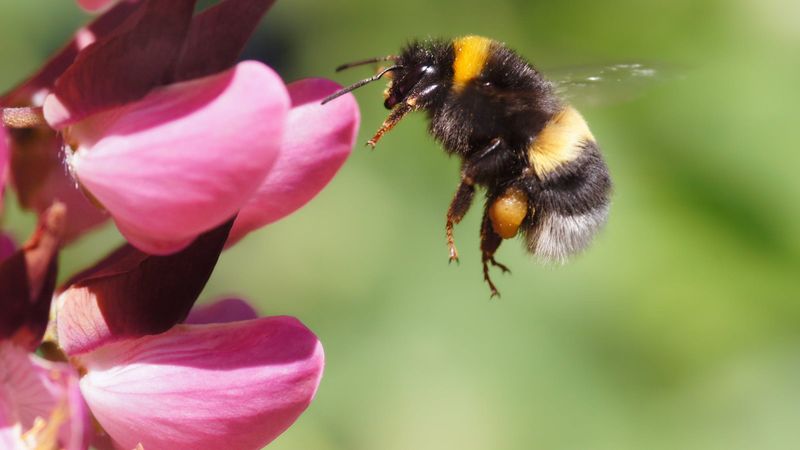
Bumblebee
Bumblebees are typically seen as gentle, but their sting can be painful and, for some, deadly due to allergic reactions. They thrive in gardens and meadows, buzzing around flowers collecting nectar.
These fuzzy insects live in small colonies, often underground or in thick grass. Unlike honeybees, bumblebees can sting multiple times, making them a threat if their nest is disturbed.
If you encounter a bumblebee nest, it’s best to maintain a safe distance. Protective clothing can help if you need to handle them. Always be cautious and avoid swatting or provoking them.
Blister Beetle
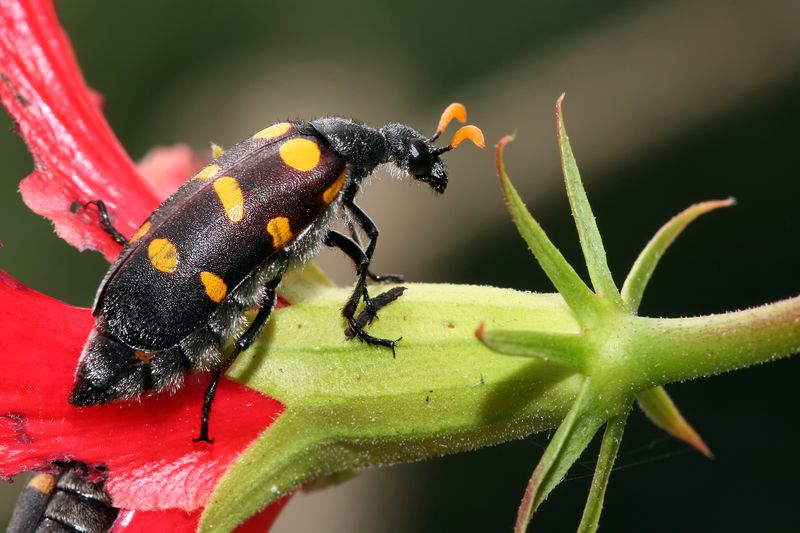
Blister Beetle
Blister Beetles possess a chemical called cantharidin, which can cause painful blisters on contact with human skin. These beetles are attracted to blooming plants and are often spotted in gardens.
Their bodies are long and narrow, adorned with vibrant colors that range from metallic greens to yellows. They feed on flowers and crops, sometimes causing harm to agriculture.
To prevent any contact, wear gloves when gardening or handling vegetation where these beetles are present. Awareness and caution can prevent uncomfortable encounters.
Kissing Bug
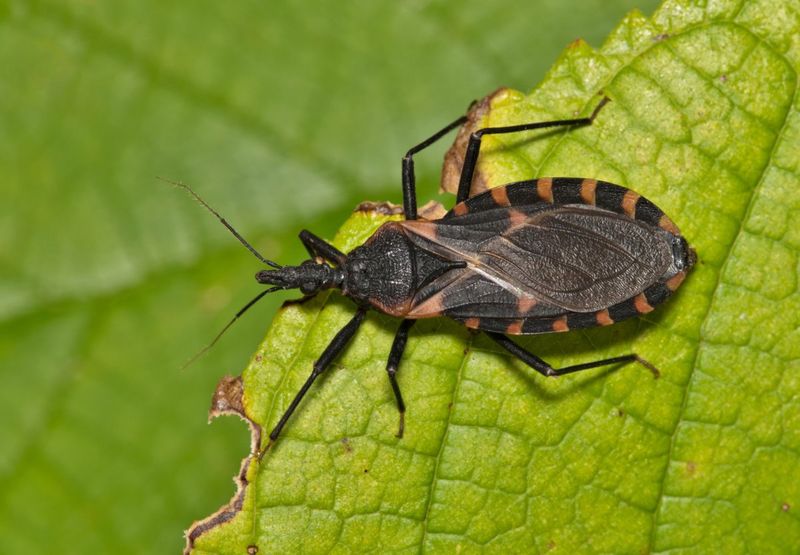
Kissing Bugs are more than just an annoyance; they are vectors for Chagas disease. These insects feed on blood, often targeting humans during sleep. Recognizable by their elongated body and red and black markings, they inhabit the southern United States.
Their bite is usually painless, but they can transmit parasites that cause serious health issues. Symptoms of Chagas disease can range from mild to life-threatening.
Preventive measures include sealing cracks in homes and using insect screens. Awareness and prompt action can reduce the risk associated with these stealthy bugs.
Africanized Honey Bee
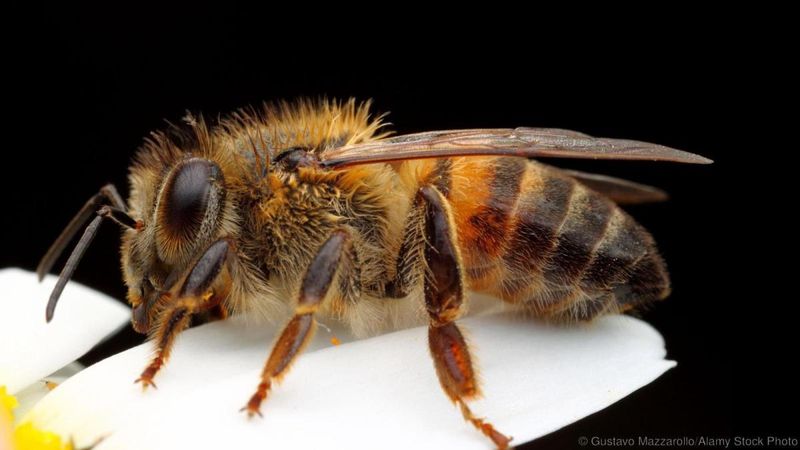
Known for their aggressive behavior, Africanized Honey Bees, or ‘killer bees,’ pose significant risks. They defend their hives aggressively and can chase perceived threats over long distances. Resembling regular honey bees, they are slightly smaller but pack a powerful punch.
Stings can lead to serious health issues, especially in individuals with allergies. Attacks often involve hundreds of bees, increasing the risk of severe reactions.
Avoiding loud noises and sudden movements near hives can help prevent attacks. If bees swarm, seeking shelter and professional removal services is advised.
Deer Tick
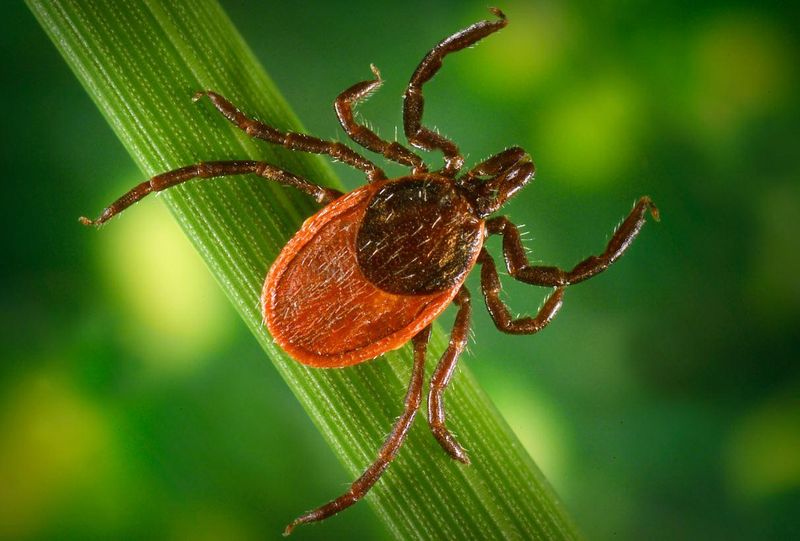
Deer Ticks are notorious carriers of Lyme disease, a serious condition that can cause long-term health issues. These small, reddish-brown ticks inhabit wooded and grassy areas, waiting to latch onto passing hosts.
Their bite is often unnoticed, making regular skin checks essential. Symptoms of Lyme disease include fatigue, joint pain, and neurological problems. Prompt removal and medical treatment are critical for recovery.
Protective clothing and insect repellent can reduce the risk of bites. Awareness and early action are key to preventing the spread of Lyme disease.
Mosquito
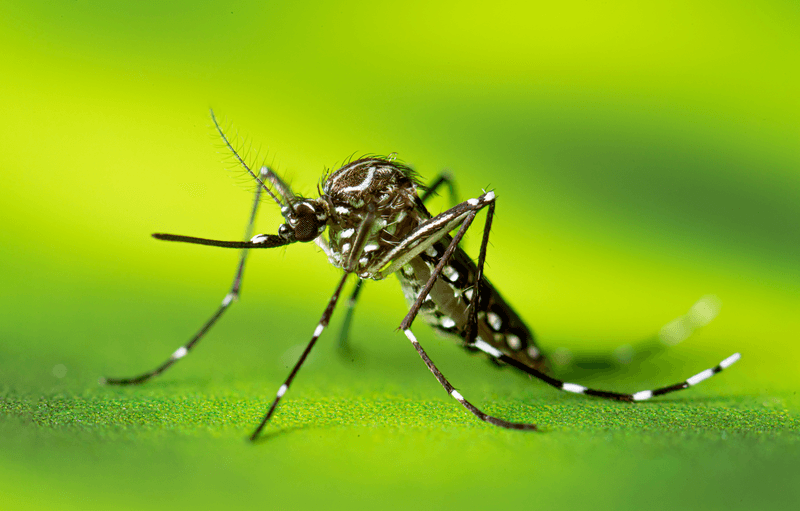
Mosquitoes are notorious for their itchy bites and ability to transmit diseases such as West Nile virus, Zika virus, and dengue fever. Found across America, these small insects are particularly active at dawn and dusk.
Their bites can cause discomfort and, in some cases, severe health complications. Preventive measures include using insect repellent and installing screens on windows and doors.
Eliminating standing water around the home can reduce breeding grounds for mosquitoes. Staying informed about mosquito-borne illnesses can help in avoiding potential health risks.
Red Imported Fire Ant
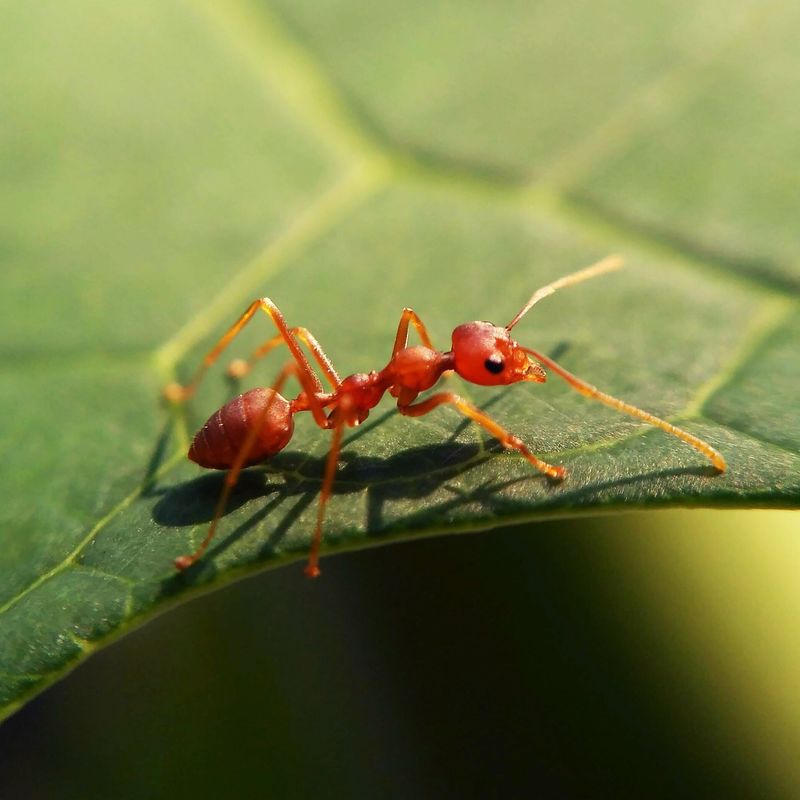
Red Imported Fire Ants are infamous for their painful stings and aggressive behavior. Native to South America, they have spread across the southern United States. Their distinctive reddish-brown bodies and mounded nests are easily recognizable.
Stings can cause significant pain, swelling, and, in some cases, severe allergic reactions. Being aware of their habitats and using caution when near nests is advisable.
Professional pest control can help manage infestations. Understanding their behavior and taking preventive measures can reduce the risk of unpleasant encounters with these fiery insects.
Yellow Jacket
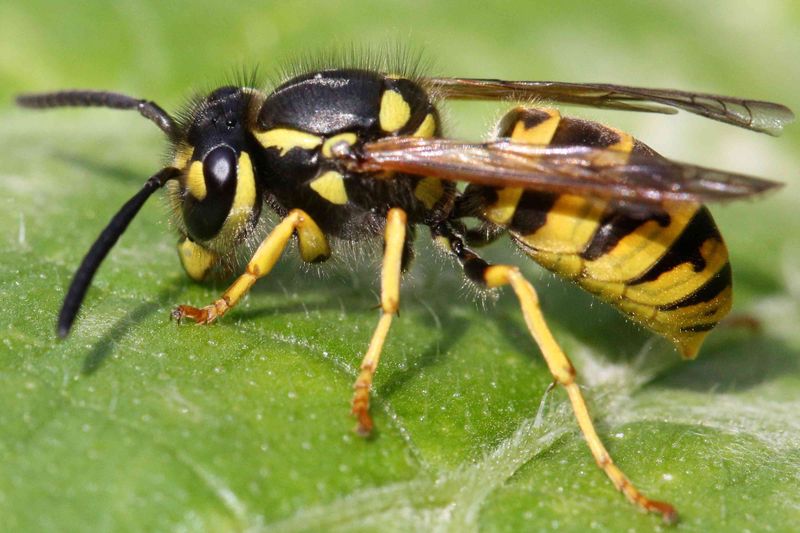
Yellow Jackets are known for their aggressive behavior and painful stings. These striking insects are distinguished by their bright yellow and black stripes and are commonly found around human activities.
They are attracted to food and sugary substances, often becoming a nuisance at outdoor gatherings. Stings can cause pain, swelling, and allergic reactions in sensitive individuals.
Keeping food covered and avoiding sudden movements can prevent unwanted interactions. Their ability to sting multiple times makes them particularly dangerous when threatened. Precaution and awareness are key in avoiding painful encounters.
Lone Star Tick
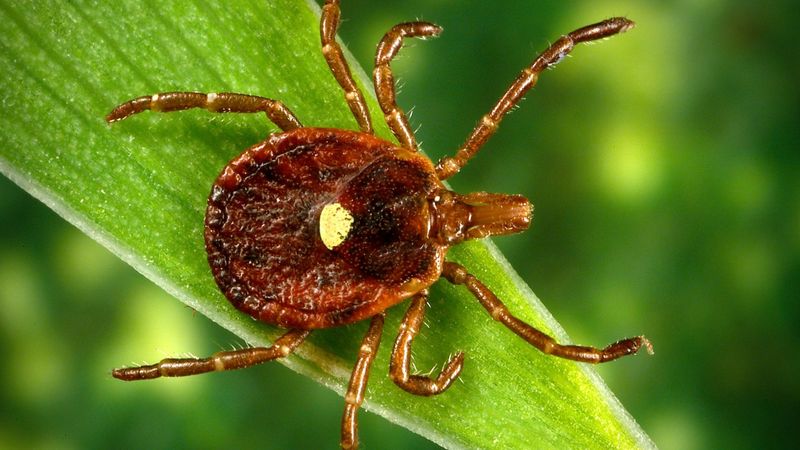
The Lone Star Tick is a common insect in the southeastern and eastern United States. Easily identifiable by the white spot on its back, it is a vector for several diseases, including ehrlichiosis and a condition known as alpha-gal syndrome, which causes an allergy to red meat.
Bites can lead to itching, fever, and other symptoms. Early detection and removal are crucial in preventing disease transmission.
Wearing long sleeves and using tick repellent can help minimize the risk of bites. Regular tick checks are an effective preventive measure for outdoor enthusiasts.
Tarantula Hawk Wasp
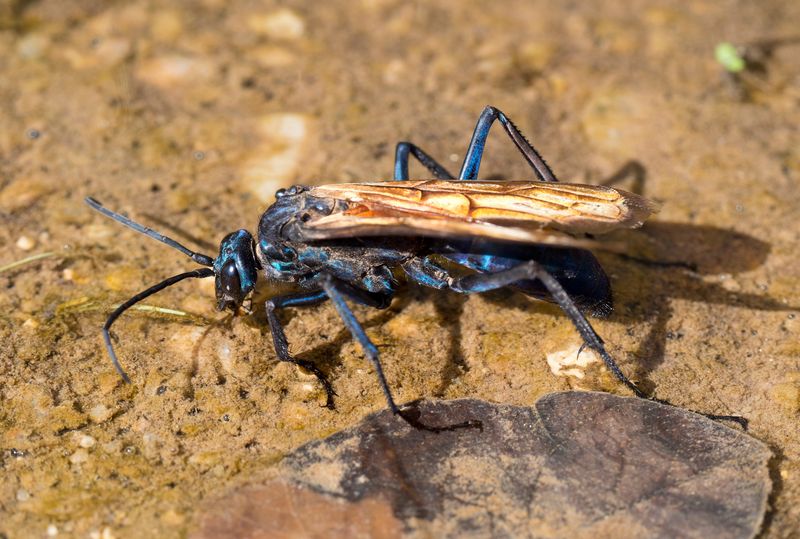
The Tarantula Hawk Wasp is one of the largest and most formidable wasps, known for its sting, which is considered one of the most painful insect stings in the world. With an impressive blue-black body and bright orange wings, it’s hard to miss.
These wasps hunt tarantulas, paralyzing them with a sting. Although not aggressive toward humans, their sting can cause excruciating pain.
Avoiding contact and observing from a distance is recommended. Their role in controlling tarantula populations highlights the complex relationships within ecosystems, despite the discomfort they can cause.
Giant Asian Hornet
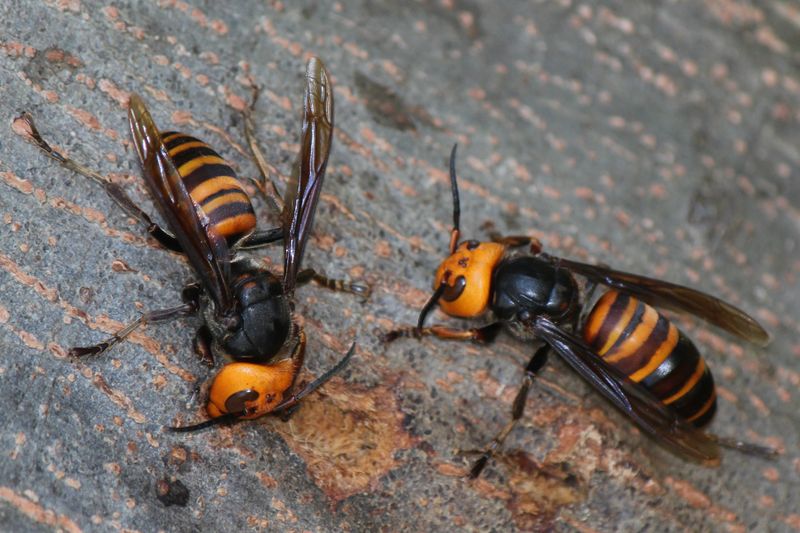
The Giant Asian Hornet, often dubbed the ‘murder hornet,’ is a recent invader in North America. Known for its size and potent venom, this hornet can pose serious threats to both humans and honeybee populations.
With an orange-striped abdomen and a distinctive buzzing sound, they can be intimidating. Their sting is extremely painful and can cause severe reactions in allergic individuals.
Beekeepers are particularly concerned about their impact on hives. Early detection and professional pest control measures are crucial in managing their presence. Being informed and cautious can help minimize risks.
Bullet Ant
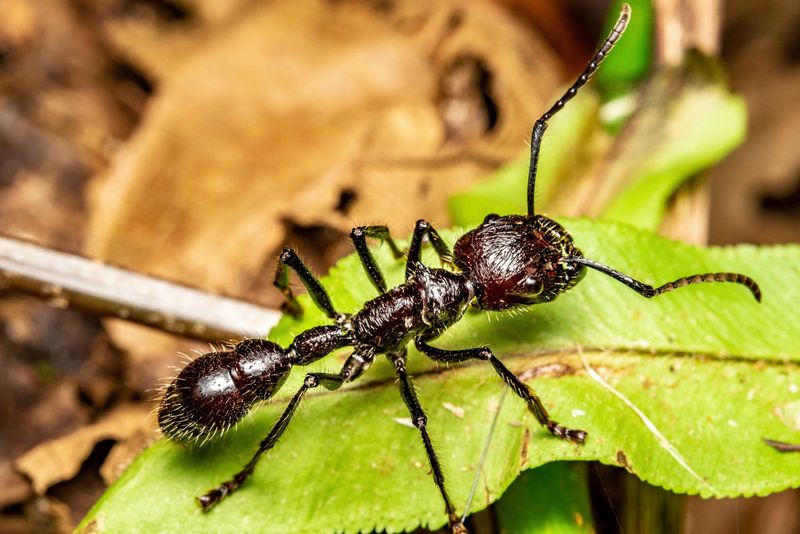
The Bullet Ant, native to Central and South America, is infamous for its intensely painful sting, described as feeling like being shot. Although not native to the United States, its presence near borders makes it a potential threat.
These large, black ants are known for their aggressive defense of their colonies. Stings can cause waves of burning pain and temporary paralysis.
Avoiding areas with known colonies and wearing protective clothing can help prevent encounters. Despite their fearsome reputation, bullet ants play a vital role in the ecosystem as predators and scavengers.
American Dog Tick
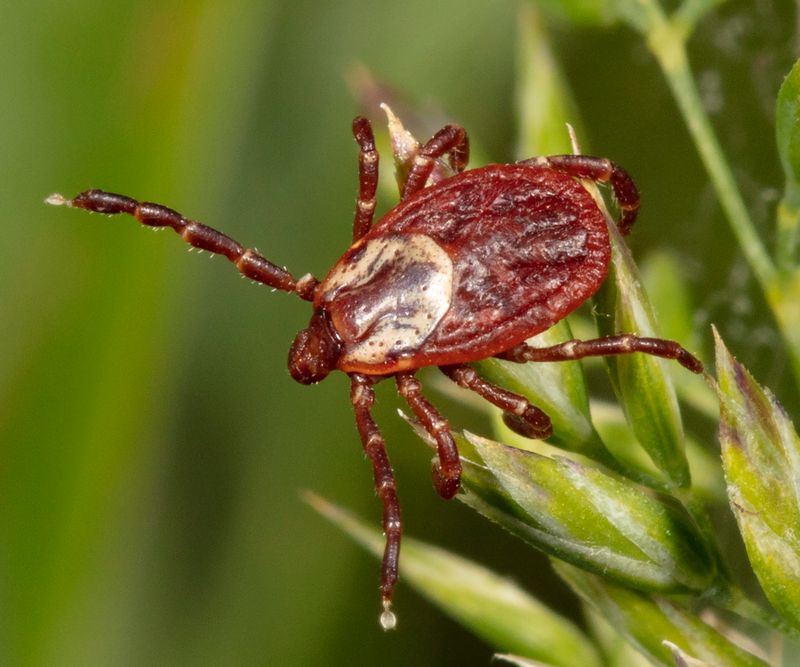
The American Dog Tick is a common vector for Rocky Mountain spotted fever and tularemia. These ticks are larger than others, with a reddish-brown body and distinctive patterns on their backs.
Found in grassy areas, they attach to various hosts, including humans and pets. Early removal of ticks is crucial to prevent disease transmission.
Wearing protective clothing and using tick repellent can help reduce the risk of bites. Regularly checking pets after outdoor activities is also important. Awareness and preventive measures are key in reducing the risk posed by these ticks.
Paper Wasp
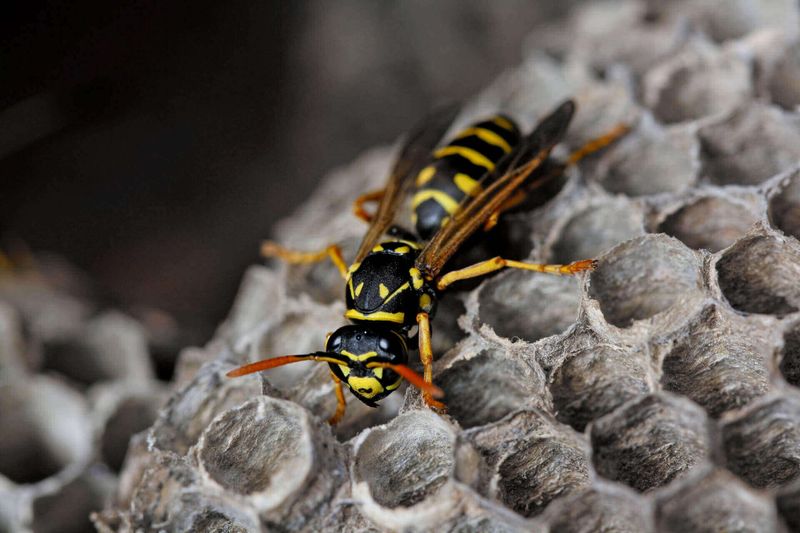
Paper Wasps are known for their painful stings and distinctive nests made from a papery substance. These wasps have slender bodies and reddish-yellow coloration. They are often found building nests under eaves or in sheltered areas.
While generally not aggressive, they will defend their nests if threatened. Stings can cause swelling and discomfort, especially in allergic individuals.
Keeping a safe distance from nests and avoiding sudden movements can prevent stings. If nests are located near high-traffic areas, professional removal is recommended to minimize risk.
Carpenter Ant
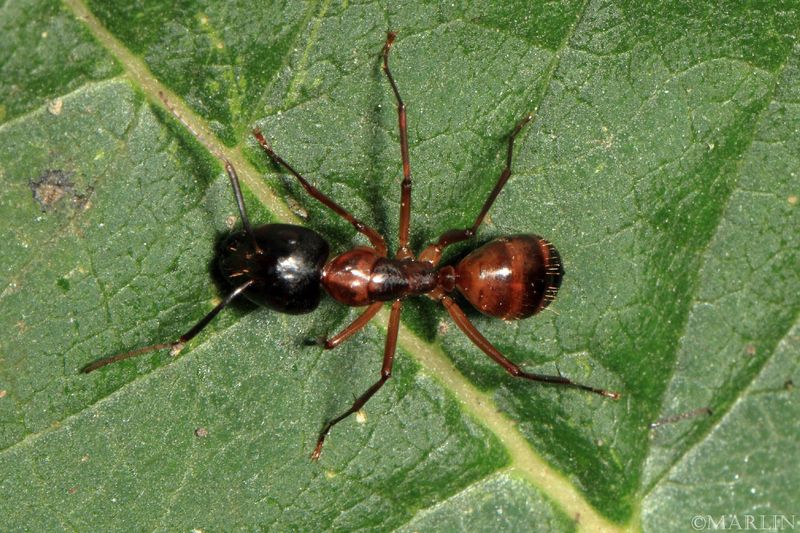
Carpenter Ants are known for their ability to cause structural damage to wooden buildings. These large, black ants excavate wood to create nests, often leading to costly repairs.
While they do not sting, their presence can indicate moisture problems. Keeping homes dry and sealing entry points can prevent infestations.
Regular inspections and prompt action are key to managing carpenter ant populations. Despite their reputation as pests, they play a role in breaking down dead wood in forests. Awareness and proactive measures can protect homes from damage.
Horsefly
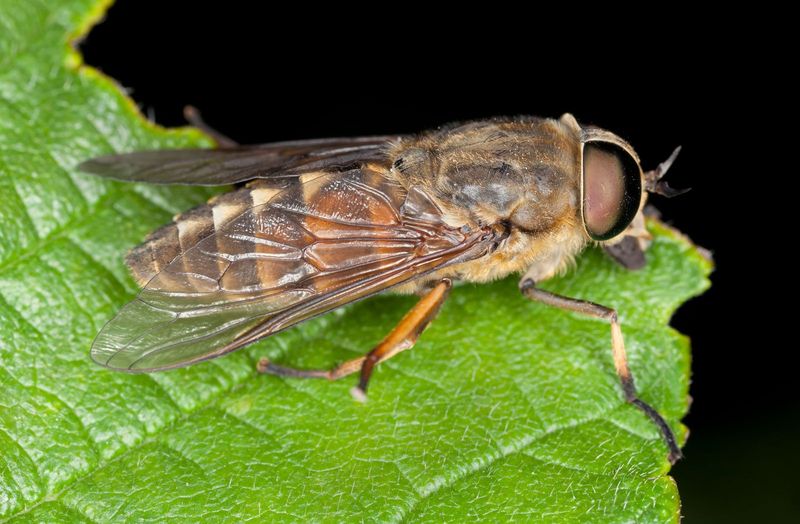
Horseflies are known for their painful bites and persistent behavior. These flies are larger than most, with large eyes and striped bodies, commonly found in rural and wooded areas.
Their bites can be painful and may cause allergic reactions in some individuals. Using insect repellent and wearing protective clothing can help minimize bites.
Horseflies are attracted to movement and dark colors, so being aware of their behavior can prevent encounters. Despite their nuisance, they play a role in pollination. However, caution is advised to avoid their painful bites.
Fleas
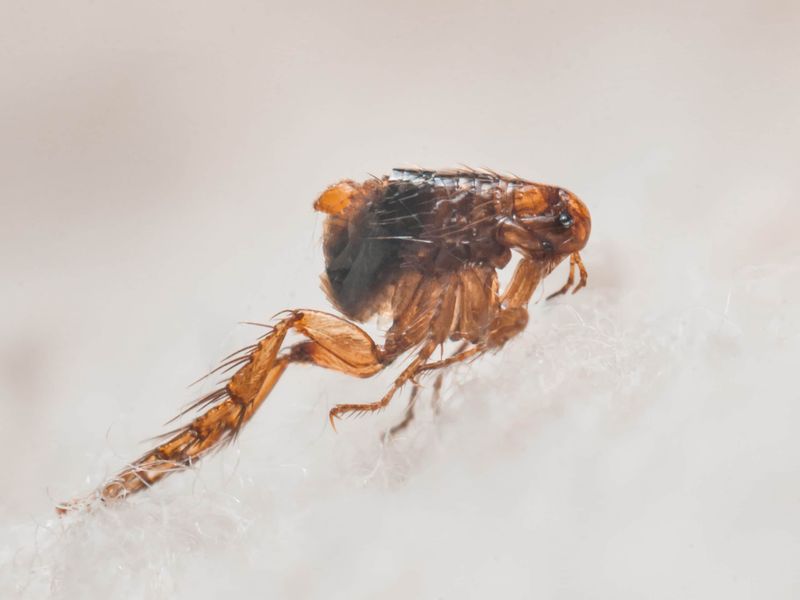
Fleas are tiny, wingless insects notorious for their bites and ability to spread diseases like plague and murine typhus. They commonly infest pets and can quickly become a problem in homes.
Their bites cause itching and discomfort, and in large numbers, they can lead to anemia in severe infestations. Regular pet grooming and using flea control products are essential in managing infestations.
Vacuuming and cleaning pet bedding can help prevent flea populations from growing. Awareness and proactive measures can keep homes and pets free from these troublesome pests.
House Centipede
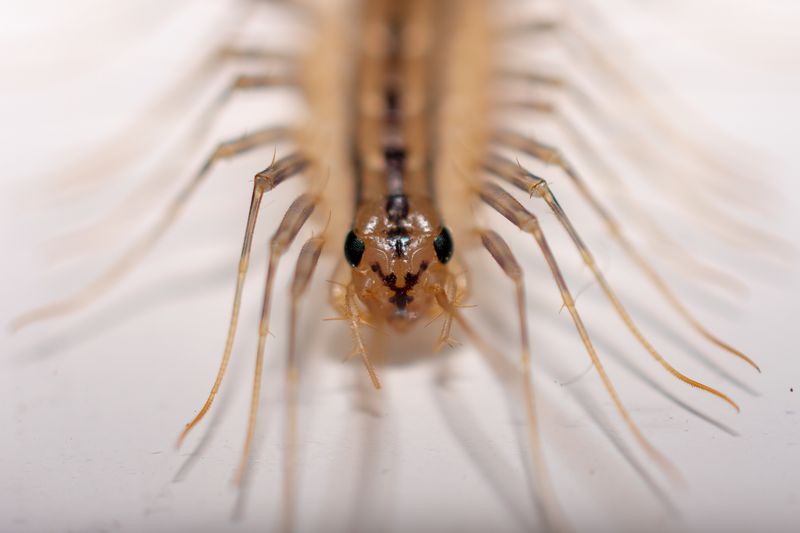
House Centipedes, with their long legs and swift movements, are often startling to encounter indoors. Though they appear menacing, they are beneficial as they prey on other household pests.
They are not dangerous to humans, but their presence can be unsettling. Keeping homes dry and sealing entry points can help reduce sightings.
Despite their appearance, house centipedes contribute to controlling unwanted insect populations. Understanding their role can alleviate fear, highlighting the importance of natural pest control. Ensuring proper home maintenance can prevent excessive encounters.
Bed Bug
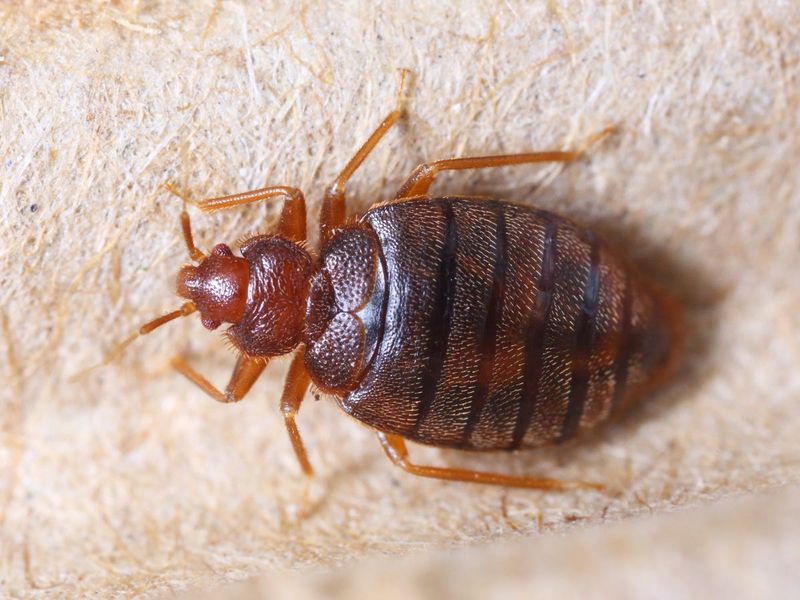
Bed Bugs are notorious for their bites and difficulty to eradicate. These small, reddish-brown insects feed on human blood, often causing itchy welts. They hide in mattresses, bed frames, and other furnishings.
Infestations can be challenging to eliminate, requiring professional pest control. Regular inspections and prompt action are vital in managing them.
Preventive measures include encasing mattresses and maintaining cleanliness. Despite their reputation, bed bugs do not transmit diseases. Awareness and proactive strategies are essential in keeping these persistent pests at bay.
Sand Fly
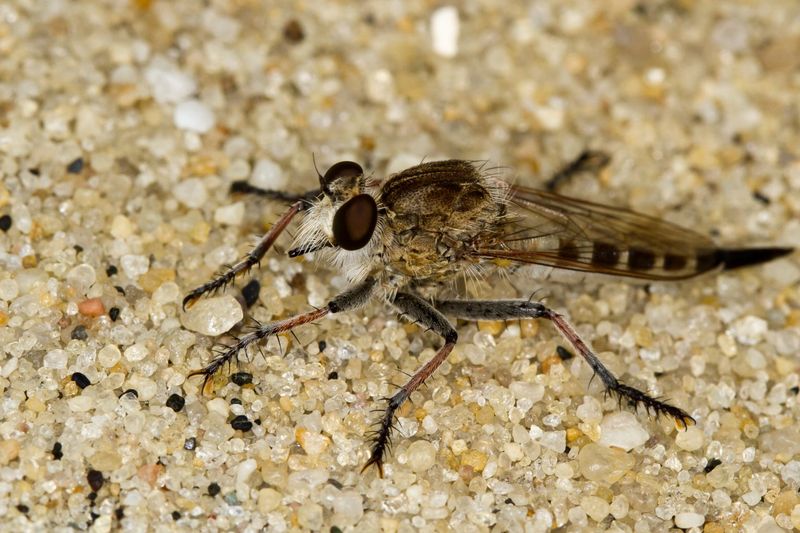
Sand Flies are small, hairy insects known for their bites and role in transmitting diseases like leishmaniasis. Found in sandy or marshy areas, they are most active during twilight hours.
Their bites can cause itching and, in certain cases, serious health issues. Using insect repellent and wearing protective clothing can help reduce the risk of bites.
Sand flies are attracted to light, so keeping lights dim can help minimize encounters. Despite their tiny size, they pose significant health risks in certain regions. Awareness and caution are advised in affected areas.
Pine Needle Moth
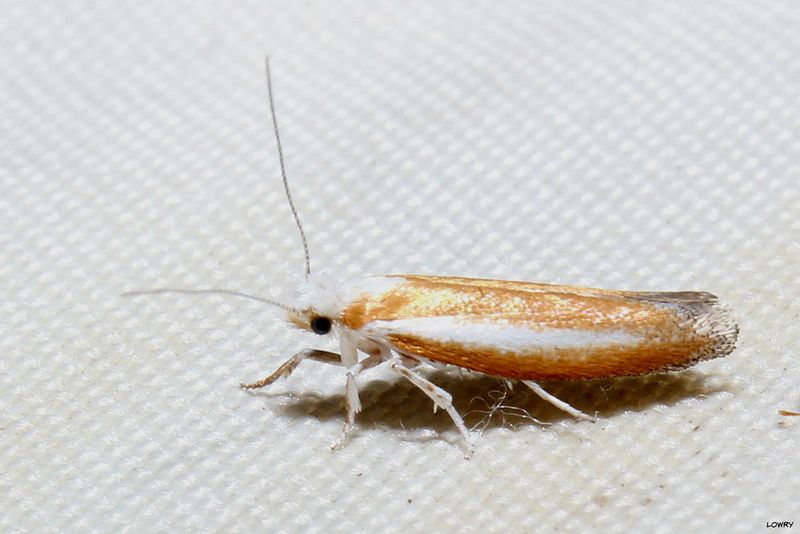
Pine Needle Moth
While not a household name, the Pine Needle Moth has been gaining notoriety in forested areas across North America. Its larvae feast voraciously on pine needles, causing significant damage to trees and altering the ecosystem. Although it doesn’t sting or bite humans, its role in forest degradation is a major concern.
During outbreaks, these moths can defoliate vast areas, leading residents to grapple with environmental and economic ramifications. Ensuring tree health and employing biological control methods can mitigate their impact. Their presence serves as a reminder of the delicate balance in our natural habitats.

